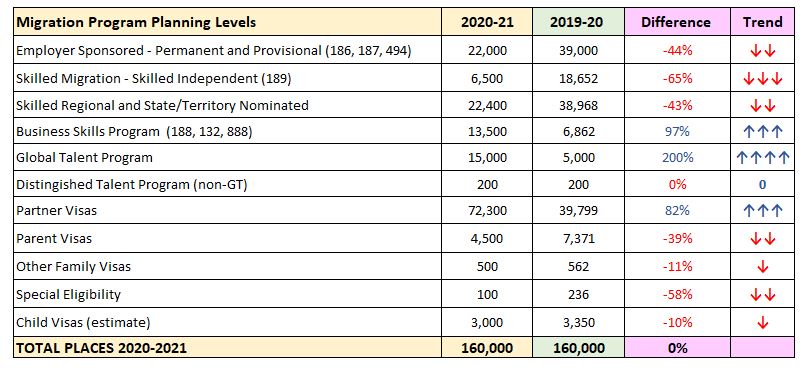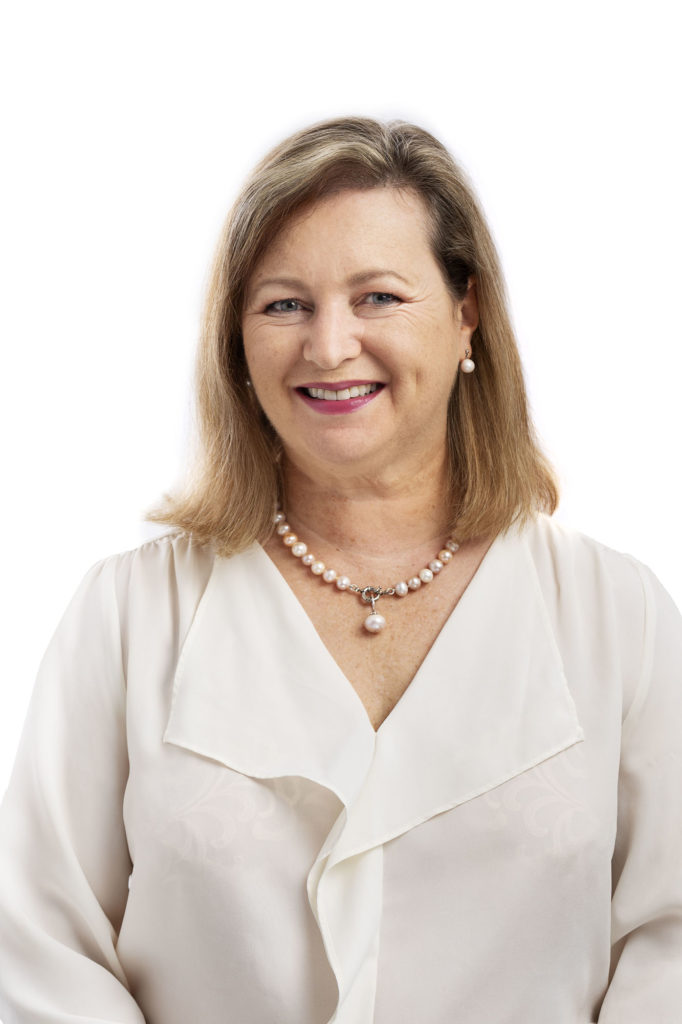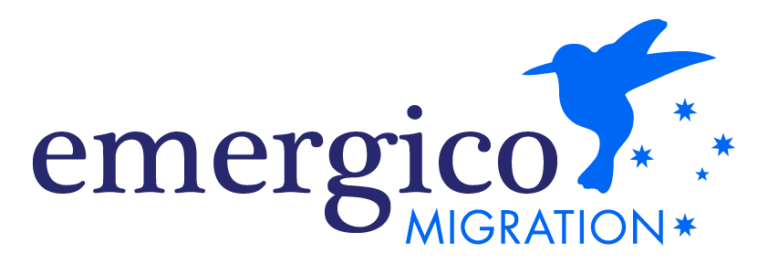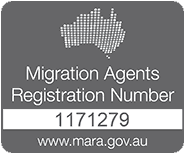The much anticipated Australian Federal Budget was handed down last night, and with it came some changes in the migration space – some anticipated, others not. One word could be used to describe it – jobs! It’s all about spending money to create employment, which will in turn lead to our post-COVID economic recovery.
Surprisingly, the ‘migration ceiling’ of 160,000 places for 2020-21 was maintained. We expected to see a drop in this number. Retaining it at 160,000 gives the Government the opportunity to re-shape the numbers for maximum economic impact.
By far the biggest priority for the Government at the moment is protecting the population through the pandemic, and preparing the economy to re-start, with a return to positive economic growth.
Here’s a summary of our analysis of the migration aspects most relevant to our clients, after the treasurer’s presentation.
Firstly, here’s a table showing the planning levels for 2020-2021 compared with last year.
NOTE – this table has been updated with the latest figures since first published.

2021 is all about ‘talent’
We’ve been talking a lot in the last twelve months about the Global Talent Program. Since launching in October 2019, 5,000 permanent residency visas have been granted to exceptionally talented people, both in and outside Australia. At Emergico, we’ve successfully managed a high number of Global Talent (Independent) Visa applications, and can vouch for the quality and efficiency of this program – as long as you meet the eligibility criteria. In 2021, the number of visas on offer under the Global Talent Program has tripled to 15,000. The Government appears to have assessed that the program is a success and is pivotal to their COVID recovery.
Bringing down the average age in Australia.
We know that one thing the Government is concerned about is that, due to the reduction of migration in the last year, the average age of Australians is slowly creeping up again (we depend on migration to lower the average age, as our own birth rate is not high enough in itself to replace our population). This is part of the reason the upper age limit for permanent skilled and employer sponsored migration was reduced to 45, from 50.
The Government has increased the Partner Visa allocation by a whopping 82% this year. Part of this will be an attempt to get through the backlog of 90,000+ partner visa cases which are waiting, but I can’t help thinking that it could also have the ulterior motive of contributing to the birth rate and thus lowering the average population age. Purely speculation! Anyway, it’s good news if you are in line for a Partner Visa.
Not so good however, for Parents – the allocation of Parent Visas has been cut by 39%, to 4,500 places this year.
Employer Sponsored Visas are a key focus
On the topic of Jobs, although we do expect a revision of the occupation lists, the number of Employer Sponsored Visas is reduced to 22,000. Note this does not include the temporary subclass 482 visa – this is not part of the migration planning levels as the 482’s are demand driven and uncapped. This figure is for the permanent employer sponsored visas and provisional. It’s likely the ‘Priority Migration Skilled Occupation List‘ will receive the most attention when it comes to Employer Sponsored visas.
Skilled Migration has significantly declined
The biggest loser in the program, is unfortunately Skilled Migration, with a total number in the vicinity of 28,900. Remember that this number includes secondary and dependent applicants – so a family of 4 would consume 4 of the 28,900 spots.
Last year the 189 was slashed by more than half, to 18,652 places – now it has been again cut by 2/3, to only 6,500. This is consistent with our predictions over the last 12 months that the 189 is not a good “horse to back” unless you can claim exceptionally high points and an in-demand occupation. The other 22,400 places will be apportioned between the States and the family sponsored 491. We understand States and Territories are modelling this through as we speak.
We anticipate mainly occupations on the Priority Migration Skilled Occupations List (PMSOL) will be considered for Skilled Migration (subclasses 189, 190 and 491) and we also suspect that the opportunities will be primarily for people who are already in Australia. The PMSOL may of course change over time to reflect changing economic needs. The occupation lists have not yet been released so we will watch this space for further information.
Business Program is poised for growth
With a doubling of the places available for Business Skills Visas, we anticipate the Department will resource the processing centre so we can get some movement on lodged cases, as well as the opportunity to lodge new applications. Many of our poor business visa clients have been on hold for a year or more! It is highly likely that the thresholds for investment may increase for some of the business visas, in line with the recent review into this.
New Zealand Citizen Permanent Residency
Some New Zealand Passport Holders are eligible for the Subclass 189 – New Zealand Stream Visa – that is, those who have been living and working in Australia for at least 5 years and entered before 19th February 2016. Under normal circumstances an applicant needs to show an income above the Temporary Skilled Migration Income Threshold (TSMIT) for the last 4 financial years. A concession has been made to extend this to applicants who meet the income requirement for at least three of the last 5 income years – which must include the most recent year.
Where to from here?
Over the next few weeks we will be analysing our current clients to assess the impact, and will be in touch directly with all affected people.
If you are not yet our client, but would like to book a consultation to discuss any of the above visa types, please book a time to talk here.





